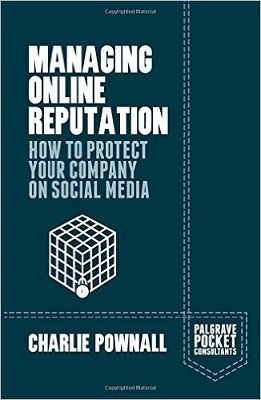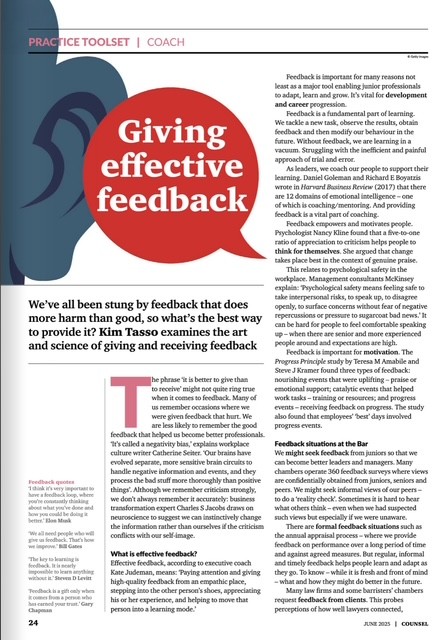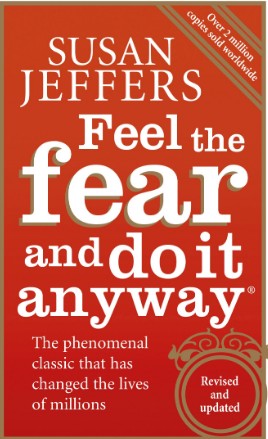
I’ve just reviewed this book on “Managing online reputation” for Professional Marketing magazine http://www.pmforum.co.uk/magazine/
It’s a timely book considering the increasing use of social media in professional service firms and the underlying fear that problems in this arena – whether of internal or external origin – could have a catastrophic impact on a hard-earned reputation. And it’s fantastically international in scope which must be valuable to those managing global reputations.
It takes a strategic and systematic approach to analysing the range of risks and types of problems – whether created by customers, employees, journalists, activists, on-line tribes or even your own campaigns. There’s also an interesting look at unethical marketing – astroturfing, sock puppetry and censorship.
The first 80 pages are devoted to analysing the risks, pages 80 to 130 on response and managing crises and finally pages 130 to 200 on preparations to handle crises.
In terms of pragmatic advice, there are a number of useful frameworks:
- Assessing the situation
- Visibility
- Virality
- Sentiment
- Influence
- Five response options
- Communicate
- Negotiate
- Leave
- Minimise
- Remove
- Dealing with client complaints
- Move fast but make sure of the facts
- Do the right thing in the right way
- Be seen to be listening and learning
- You don’t need to respond to everyone
- Take control when appropriate
- Dealing with employee issues
- Set out your position quickly, clearly and in full
- Step back and don’t get into fights
- Keep your staff in the loop and be consistent
- Address yourself to the community
- The backfiring campaign
- Be sensitive but don’t overreact
- Admit the error of your ways
- Repent sincerely
- Different types of negative situation
- Severity
- Longevity
- Social media crisis plan should include:
- Crisis and issues definitions
- Goals and measurement
- Online stakeholder and influencer lists
- Policies and protocols
- Content (including crisis holding statements), channels and tools
- Team, partners and suppliers
- An appendix of examples
- Levels of crisis
- Critical
- Severe
- Significant
- Moderate
- Low
- Social media crisis team members
- Listen to and analyse online discussions
- Evaluate and develop social media campaigns and programs
- Manage online discussions, both on official social media profiles and third party platforms
- Develop and distribute online content including videos
- Create and manage online advertising campaigns
- Responding to a crisis
- Be fast rather than perfect
- Establish the appropriate social tone
- Keep information flowing
- Listen actively and be seen to be listening
- Proactively rebut rumours and misinformation
- Cleaning up your search reputation after a major meltdown
- Know your objectives
- Think laterally
- Think visually
- Focus on high-authority channels
- Distribute content widely
- Create a dedicated crisis hub
- Maximise your recovery
- Know what not to optimise
- Take the long view
- Top tips
- Know where you are going
- Prepare to move fast and with prevision and finesse
- Commit to transparency but understand your limits
- Walk the talk with confidence but not arrogance
- Listen with your ears, eyes and heart and not with your mouth
- Be spontaneous, creative and make mistakes
- Understand what online reputation isn’t and can’t fix
I’m delighted to see that the author shares my nervousness about social media and search engine automation.
It’s an important read for anyone who is responsible for reputation management – whether in a marketing and communications function or at Board level. Lawyers who are involved in defamation and intellectual property abuse cases and risk managers might also find it helpful. And it would be a great investment for those studying the CIM’s course on Corporate Reputation Management.
Research references
CIC/Ogilvy Public Relations – An analysis of the impact of online buzz affecting foreign and local companies in China during 2013 discovered that purchase intent collapsed between an average of 169% and 221% immediately, dropping to its lowest level four days after the incident. It also discovered that launching an investigation is more effective than admitting the problem from the start and apologising.
CIM – 62% consumers are sceptical about companies’ online marketing methods with only 20% reporting high levels of trust and confidence about what companies say online about themselves.
Clifford Chance/EIU – Reputation risk is now regarded as the second most important risk after financial risk. 57% board members are most concerned about damage to reputation, 39% are most worried about impact on share price and 33% about direct financial cost in the form of lost sales.
Deloitte – 87% respondents rated reputation risk as “more important” or “much more important” than other strategic risks
Deloitte/Forbes Insights – Corporate leaders think the risk of social media ranks alongside financial risk as one of the single largest threats to their business.
Freshfields Bruckhaus Deringer – News and commentary about crises stemming from behavioural issues spread faster online than any other type. Amongst 102 senior crisis communications professionals at UK/European multinationals it was found that a quarter of crises are picked up by the international media within one hour of an incident happening and two-thirds within 24 hours. Over half of the incidents were still in the news a month later.
McKinsey – The more broadly and deeply firms adopt social technologies the bigger the reported benefits notably through increasing speed to access knowledge and reducing communications and travel costs. Between USD 900 billion to 1.3 trillion can be unlocked through improved communication and collaboration.
Thomson Reuters – Defamation actions jumped 23% in the UK in 2014, with much of the rise attributable to social media.
Favourite quotes:
“It is often said that the true test of a negative situation is how you handle it; the social web has the effect of making already difficult situations even more intimidating”
“Any half-decent communications or marketing professional will tell you that effective communication starts with understanding the audience”
“The traditional model of corporate reputation managed by communications and corporate affairs professionals is effectively over and that marketing, sales, customer service, HR, legal, risk management, internal audit and social media must all be actively involved and working more closely together”.
“Threats can now be made by just about anyone, at any time, from any place and in ways that are expressly designed to cause maximum disruption and reputational damage”
“Research shows we are now only able to concentrate for eight seconds – one second less than a goldfish”
“One sound tactic (in activist situations) is to get the most authoritative, trusted experts you can find to speak out in your favour”
“Let the community come to your defence”
“Dwight D Eisenhower reputedly said that “plans are useless but planning is useful””
Book contents:
- The New Abnormal
PART 1 – Understanding the threats
- Defining online reputation threats
- Strategic and financial threats
- Social and environmental threats
- Behavioural and legal threats
- Operational and technological threats
PART II – Managing incidents
- Formulating the right response
- The furious customer
- The rogue employee
- The committed activist
- The hostile journalist
- The backfiring campaign
PART III – Handling crises
- The changing face of crises
- Preparing for a crisis
- Responding to a crisis
- Recovering from a crisis









